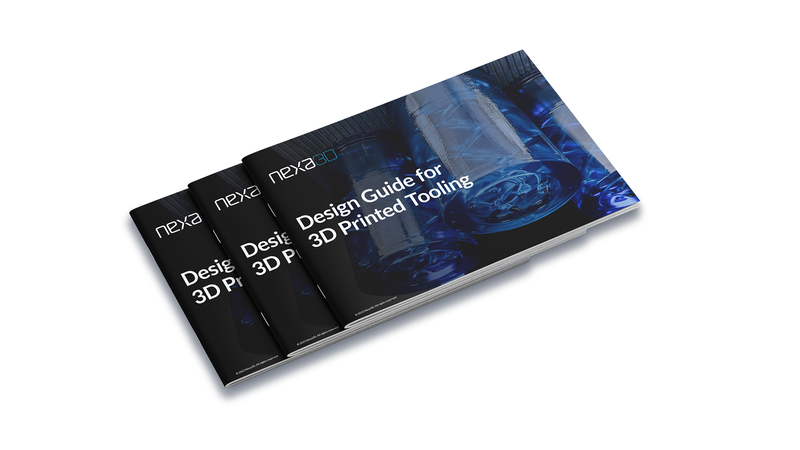Essential Design Guide for 3D Printed Tooling
Comprehensive set of design guidelines for Freeform Injection Molding
This article was first published on
nexa3d.comIntroduction
Freeform injection molding combines the freedom of 3D printing with the reliability and mechanical performance of conventional injection molding. A complex tool is printed using a dissolvable xMOLD resin that is compatible with the actual molding feedstock to create prototypes and production parts in final grade plastics – within hours and at a fraction of conventional tooling costs.
The Nexa3D Design Guide for 3D Printed Tooling offers comprehensive strategies for enhancing 3D printability and moldability of tooling components, focusing on optimizing part design and mold creation to leverage the advantages of 3D printing technology.
Key areas covered include adjusting for part shrinkage, optimizing mold and frame size, proper placement of inlets and outlets, and ensuring flow and gate placement for efficient material injection. It also delves into techniques for split molds, emphasizing the benefits for printability, cleaning, and inspection, alongside considerations for demolding and the use of slip to aid in part release.
The guide further explores maximizing moldability by addressing debossed features, thin-walled designs, core displacement, and multi-mold assemblies. Advanced topics include designing for Metal Injection Molding (MIM) and Ceramic Injection Molding (CIM), highlighting the importance of considering shrinkage, feedstock characteristics, and the need for additional steps like debinding and sintering. Practical advice on material selection, injection parameters, and the use of support structures to overcome printing challenges like overhangs and the need for vacuum relief tracks is also provided, ensuring a holistic approach to the design and production of 3D printed tooling.
This guide focuses on:
- Introduction to 3D Printed Tooling: An overview of the technology and its applications.
- Design Considerations for 3D Printed Molds: Guidelines for designing molds that take advantage of 3D printing capabilities.
- Material Selection for 3D Printed Tooling: Advice on choosing the right materials for different tooling applications.
- Advanced Techniques in 3D Printed Tooling: Discusses more sophisticated strategies for designing and producing 3D printed tools.
- Case Studies and Applications: Real-world examples of 3D printed tooling in various industries.
The report is a valuable tool for professionals involved in manufacturing and design, specifically those focused on tooling production. This includes mold designers, engineers, and manufacturers who are exploring or already utilizing 3D printing technologies to innovate and enhance their tooling processes. It provides valuable insights for those looking to leverage 3D printing for more efficient, cost-effective, and customized tooling solutions in various industrial applications.
